|
Richer in nutrients and dietary fiber, organic food would also reduce exposure to pesticides. Interview with Denis Lairon, nutritionist and research director emeritus at Inserm (National Institute for Health and Medical Research). According to the Barometer of the perception and consumption of organic products published in March 2022, 9 out of 10 French people consume organic (91%). What is the impact of this diet on health? Answers with Denis Lairon, nutritionist and research director emeritus at Inserm (National Institute for Health and Medical Research). Eating organic would be better for your health. Is it true ? Organic foods are better in terms of nutritional values. It is noted that in vegetable products, there is less water, especially for vegetables. According to studies, we also notice that there is more magnesium, iron and zinc. Consumers of organic products also have a better diet. For example, they choose more cereals made from brown or wholemeal flours, and pulses, which are rich in nutrients, minerals and dietary fibre. This has a major impact on their nutritional status. We observe that those who regularly eat organic have significantly higher nutritional intakes than those who never eat organic. Organic enthusiasts are also less inclined to buy animal products (meat and dairy products). Conversely, they consume twice as many fruits and vegetables, unrefined cereals... We also measure between 40 and 80% reduction in exposure to pesticides. Scientific work published with the NutriNet-Santé cohort since 2013 and by the BioNutriNet study also indicates that eating organic reduces the risk of obesity and overweight... In 2013, we worked on a sample of 54,000 adults at any given time. We have observed that among regular consumers of organic (about 60-70% of their food), the risk of becoming obese is reduced by 50%. In our second study, we followed 62,000 people over three years, and found that there was a 30% reduction in the risk of obesity and overweight. These results are confirmed by two other studies carried out worldwide, in Germany and the United States. What about other diseases? For cardiovascular risk, we studied the metabolic syndrome. It is characterized by abdominal overweight, hypertension and increased blood sugar. We found that there was a 31% reduction in the risk of having metabolic syndrome for people who regularly ate organic compared to those who never ate organic. For type 2 diabetes, 33,000 men and women were followed for 6 years. The overall result is a 35% reduction in the risk of having type 2 diabetes if you eat organic food regularly. The difference is much more marked in women than in men. Another study on 70,000 adults finally indicates a 25% drop in the overall risk of cancer among organic consumers. Source: See article for organic here
This article mentions the difference between certified organic food and conventional food. It is important to mention that the organic food mentioned on www.soilandsun.co.uk is a certified organic food. Organic certification involves application of strict standards and an annual audit from an indepedent auditing on the application of these standards. Failing to follow these standards, farmer or grower are not allowed to trade their product as organic in other words they lose their organic certification status which proves that the product made by them is not anymore organic. A. Organic food are Heathy Organic foods are free from:
Organic foods have different appearances This difference mainly apply to fruits and vegetables. As a consumer you will see fruits with smaller size, cracks or blemishes on the surface. They do not look super shiny and do not have perfect shape but they look imperfect and real. Organic farming is environment friendly and sustainable Due to absence of these toxic pesticides, heavy metals, GMO, herbicides, the organic farming practically conserves the quality of the soil and water. There are reports mentioning that there is a huge contamination of the rivers in Europe with pesticides and they had been used several years before their detection and remain there. The environmental pollution made by pesticides, heavy metals and GMO is non reversible. Organic farming practices are sustainable, as the farmers/growers will not push nature with all its elements animals and trees/plants to produce more especially when there is a bad harvest season. Animal manure or compost are used to feed the soil and weeds are managed by rotating crops. Natural on the food label does not mean organic Many processor use various words such as Natural or Sustainable on the food label to make the consumers think that their products are organic. These foods are not certified organic foods and are full of ingredients from conventional farming which uses all these toxic chemicals starting pesticides i.e round -up to GMO and insecticides and heavy metals. We have an obligation to inform all the consumers about the huge benefits of organic foods to our health and our planet air, soil and water. Sources:
1. Human health implications of organic food and organic agriculture: a comprehensive review Environmental Health volume 16, Article number: 111 (2017) 2. Livestock antibiotics and rising temperatures disrupt soil microbial communities, Cary Institute of Ecosystem Studies 3. Food Preservatives and their harmful effects, Dr Sanjay Sharma, International Journal of Scientific and Research Publications, Volume 5, Issue 4, April 2015 4. Effects of Preservatives and Emulsifiers on the Gut Microbiome By: Angel Kaufman Spring 2021 A thesis submitted in partial fulfillment of the requirements for a baccalaureate degree in Biology in cursu honorum Reviewed and approved by Dr. Jill Callahan Professor, Biology 5. Pesticides and antibiotics polluting streams across Europe, by Damian Carrington, found on https://www.theguardian.com/environment/2019/apr/08 Increasingly popular with consumers, Washington-grown organic apples and pears thrive in the region’s dry, disease-discouraging climate. Off the tree, however, organic fruits are at the mercy of physiological disorders and fungi that can rot and destroy more than a third of the annual harvest before it gets to the table. This fall, scientists at Washington State University are launching new research to find safe, organic-friendly ways to defeat post-harvest diseases and foodborne illnesses in apples and pears, while extending their storability. Achour Amiri, a Wenatchee-based plant pathologist, is partnering with a team of scientists and students, including food safety and postharvest systems specialists, to test promising technologies using heat and controlled atmosphere in storage. Funded by a four-year, $1.5 million grant from the USDA National Institute of Food and Agriculture’s Organic Agriculture Research and Extension Initiative, the team is also exploring safer fruit coatings and timely sprays to limit infection and preserve organic fruit quality. Heat after harvest Growers currently utilise some organic treatments to keep fungi at bay in the orchard. “Once the fruit is harvested, it’s a different story,” Amiri said. Organic packers lack effective methods to stop postharvest pathogens and physiological disorders. Rots are their number one challenge to packing and storing fruit,” he added. “After five months, they can lose up to 50% of the crop just to rot.” Thermotherapy, or heat treatment, is one alternative. High temperatures shut down and kill microbes, including decay-causing fungi. Thermotherapy has also been shown to keep fruits and other produce fresh longer. “We need to find the optimal temperature to keep fruit quality and kill spores without damaging the fruit,” said Amiri, who will test heat’s effect on major fungal culprits, such as gray mold, bull’s eye rote, speck rot, and blue mold. Apple, pear, and stone fruit varieties may have varied susceptibility to heat, so the team will test different cultivars to learn how to use thermotherapy safely. Dynamic controlled atmosphere
Another approach involves changing the controlled atmosphere in which apples and pears are stored. Traditionally, temperature, humidity, and levels of oxygen and carbon dioxide are steadily maintained to slow the ripening process and keep fruit fresh. Amiri’s team is testing a modified practice called dynamic controlled atmosphere storage, in which oxygen levels are progressively lowered. “We’re hoping to show evidence that this can work in reducing decay and extending fruit quality,” Amiri said. Fruit gives off gasses in storage. Scientists can analyze these exhalations to learn if fruit is under stress, which affects freshness and firmness and can cause other disorders. Amiri seeks to find the limit before stress begins. Better timing and ingredients The team will also test different spray materials made of biological agents, such as beneficial bacteria, and other safer ingredients that may combat rot-causing microbes. “Different pathogens infect fruit at different stages of the production cycle, so timing is key,” said Amiri, who plans to test ingredients through the seasons to choose the most effective approach, as well as define the best harvest window for quality and disease defense. Starting field work next spring, he’ll partner with packers and farmers to ensure discoveries work in the real world. Amiri is excited by the cross-disciplinary nature of the project, which connects experts in pathology with fruit quality, physiology, and food safety. “We want to develop these technologies to cover other issues beyond rots, preserving fruit quality and improving safety,” he said. Source: WSU Insider Photos from: Anita Jankovich Unsplash-Rotten fruits and Organic ekiosk: Live Different, Go Organic-Organic Oranges The some other alternatives to keep fruit safe from fungi-Such case is the Organic Sundried Kymi Figs which are presrved using a bay leaf and they do not contain sulphur chemical compounds for preservation. If you would like to taste these delicious Kymi Figs follow the link on the Organic ekiosk: Live different, Go Organic No additives, fewer pesticides and much more eco and animal-friendly than your average slice of bacon or jar of honey – when it comes to organic produce, there’s a lot to love. As the daughter of a beef farmer and an ambassador of Organic September’s #FeedYourHappy campaign, Sara Cox knows a thing or two about the joys of organic food. When we caught up with her she told us that she eats organic not just because “it’s gorgeous,” but because she believes that “it’s good for the animals and good for the planet,” too. “Give me a knobbly misshapen organic strawberry over the weirdly uniform non-organic ones any day,” and she’ll be happy, she says. We couldn’t agree more, to be honest, which is why we asked her to come up with a few top tips for how to #FeedYourHappy in the capital this Organic September: Get stuck in On September 16, shops across the city will be hosting all sorts of celebrations and offering free organic samples to customers. ..........have an Organic Kitchen pop-up with lots of cooking demonstrations using delicious organic ingredients going on. Guide to Organic SeptemberSpend a little, learn a lot
Catch River Cottage at Borough Market all month, delivering a season of cookery courses and free talks. Find out more info here. Go local Pop at independent pro-organic shops, ......... Or take a trip down to your local market and support organic farmers. Urban Food Fortnight – which runs from 8-24 September – showcases all the fabulous food that's produced across London. With a programme packed full of foodie events, it's a fantastic way to explore something new! Try something new Give an organic delivery box scheme a trial run. Check out companies that deliver in London, such as the Organic Delivery Company, Abel and Cole, Riverford or Well Hung Meat. A full list can be found here. Shop smart Look for the organic symbol - Soil Association or Organic Farmers & Growers - and make small changes to your weekly shopping. Take advantage of the amazing offers on your favourite organic products and stock up, or start small with your everyday essentials like milk or tea. Here's a great guide for what to look out out for. Eat up Look for organic when you eat out. There are some amazing restaurants and cafes that serve organic food. If you see the Organic Served Here logo, you can be sure they are committed to sourcing organic ingredients. The Soil Association has a fantastically comprehensive round-up of some of the capital's best pro-organic eateries. ''Sarah Cox's Guide to Organic September'' full article can be found here - Source: Foodism Farmer Angus McIntosh has the intense look of someone with a single dream like skateboarding to the South Pole. He wears a slightly ingenuous expression, as if he has just been born into a new world and finds everything curious and a bit disturbing. With a background as a trader for [...........] in London, there is a hint of cufflinks and striped shirt in his farmerish attire and smooth talk. However, his verbal spritz no longer sprouts derivatives and hedge funds but involves a passion for environmentally friendly farming. And boy do you need passion. In a world where farming is a big industry (visiting a farm in the USA is hazardous because of free floating poisons), following a dream of clean food is a kind of madness. Farmer Angus’ farm is situated on 126 hectares of irrigated pasture at Spier Wine Estate near Stellenbosch. It is a place that ignites the heart with its well cared for animals, green pastures, vegetable gardens and on site butchery. A friend calls it “fairyland”. The farm arguably hosts the Cape’s best non-industrial food production. The eggs are yolky and delicious and the meat which can be ordered online is clean and tastes like meat used to taste. Remember? Before feedlots, pesticides and hormones. About six years ago I discovered his eggs by chance, astonished by their creamy innards and thick marigold coloured yokes. Investigating their origin, I came across Farmer Angus, moving his egg laying hens in “eggmobiles” to new outdoor pasture. He told me then, “The biggest lie in agriculture is free range eggs. They live in barns, they don’t range outside. On commercial egg farms, chickens live and never leave a space equivalent to an A4 piece of paper.” And it is not only the animals that are benefitting. His egg company is now 80% owned by his staff and the eggs get better and better. “I am only a 15% shareholder but it’s got my name on it,” he says. Over the years McIntosh has developed biodynamic and regenerative agricultural practices in the raising of the farm’s animals which include cattle, pigs, chickens and laying hens, as well as vegetables and wine. His pastured livestock and poultry are moved frequently to new pastures where they can perform basic needs such as dustbathing and flapping their wings. Often in the past in butcheries or so-called organic groceries, I have asked about provenance. So far I have never met a retailer who has even taken the trouble to see where the food (particularly labelled as “organic”) they sell comes from. Farmer Angus encourages people to visit the farm and see where their food is produced. Caring for the animals properly is a high priority. More and more restaurant owners around the world are keeping their own herds for the simple reason that cared for cattle produces not only the healthiest but the tastiest meat. With farming there is so much wonkery – what irony that the salt of the earth, the food we eat is as about as full of corruption as the Zuma Cabinet. His desire is for people from all walks of life to be able to eat better and more nutritiously and to understand what they put in their bodies. [...................] The challenge of agricultural sustainability has become more intense in recent years with climate change, water scarcity, degradation of ecosystem services and biodiversity, the sharp rise in the cost of food, agricultural inputs and energy, as well as the financial crisis hitting hard on South Africa. He reels off stats with an almost cult-like enthusiasm. “A well looked after Jersey cow that has grown up on pasture should give you 50 lactations. Do you know what the average lactation in South Africa is? Two point one. They are treated as monogastrics and fed a heavy corn diet three times a day. As a result the milk is so high in pus that they are forced to homogenise it. “Of course people are going to be allergic to it.”
I have always wondered why so many people are “allergic to dairy”. South Africa should be the land of milk and honey; instead it is the land of cheap chemicalised food. “We have the highest obesity rate in the world. The rural Africans understood the value of milk, a whole food, but they lost the tradition when they came to the cities to work.” Personally, says Farmer Angus, “I think that consumers have to think about food differently and eat differently. They need to be conscious that behind a kilo of tomatoes lies a lot of work. They need to know where their food comes from and what goes into it. “People are living on more and more processed foods, so the body is craving nutrients. The only thing that the people in agriculture agree on is that the nutrient content of food has been in decline for 120 years. The carrots your grandmother ate and the ones you eat might look the same but on a nutritional level they are entirely different. “Most of us can grow our own vegetables, we can all make our own worm compost which is the best fertiliser of all. South Africa has got a million unemployed people. Why are they not growing their own food? Here’s why. There is a stigma attached to farmers which is why so few guys grow their own food in a place like Khayelitsha. They want to wear zoot suits and drive Beemers.” McIntosh’s new project is producing first grade grass fed, pesticide free food at an affordable price. Last week, wandering the aisles of Checkers, I came across such usually unaffordable products as pancetta, coppa, prosciutto at a price within my budget. Let us give thanks for the pig. Pancetta made from the belly, coppa from the neck and prosciutto from the leg and Black Forest ham to die for from the loin, a real feast. But not a feast for pigs, especially in South Africa. “I only know two farmers who do not cage their pigs,” says McIntosh. The European Parliament’s Agriculture Committee has recently called on the European Commission to propose a revision of the EU directive on farmed animals with the objective of phasing out the use of cages in animal farming. McIntosh’s move to supermarket selling is not only significant because people like me can afford to buy it but it is the first time that grass-fed beef is being sold at the same price as feedlot products. “But more important,” says Farmer Angus, “this is a truly costed item. The beef you buy in a shop is not really costed, the antibiotic resistance is not costed, the inflammatory diseases you get are not costed. There is a whole lot of stuff that is not in the price, so true cost accounting is another thing that has to be on the table in order to keep any ethical enterprise going.” “This stuff has been outdoors reared, it is not imported and most important it has been cured without adding nitrates or nitrites plus the chemical arsenal that fires up most commercial foods. Our charcuterie, made by Gastro Foods, is the only charcuterie in South Africa cured without added nitrates or nitrites. “We have the space, we have the weather, all we need is the absolute desire for better nutrition. “And there are rewards. The carbon in our soil has increased and we get paid credit for that. What people don’t realise is that the vegan diet that everyone is trying to ram down our throats is destructive to the ecology. Whereas this is generative to the ecology. In the vegan utopia there are no animals, so how do they make the food for the plants? They can’t make animal based fertiliser or compost so they have to use chemicals. “Actually, we have no choice. We go the ethical route or we die.” As Joel Saliton, a farmer in the USA famous for his ethical practices, says, “If you think organic food is expensive, try cancer.” A study 2020 conducted by the insurance comparison website Compare The Market, which ranked the healthiest and unhealthiest countries – all part of the Organisation for Economic and Co-operation Development, found that South Africa is the “unhealthiest country in the world”. A separate study, The Indigo Wellness Index, which tracks the health and wellness status of 151 countries, also found South Africans were dangerously unhealthy and ranked SA the unhealthiest country in the world in 2019. Meanwhile, in 2016, the World Health Organisation (WHO) estimated 28.3% of adults in South Africa were obese. This was the highest obesity rate for the sub-Saharan African countries recorded by the WHO. Source: dailymaverick When making comparisons at the grocery store between a gallon of conventional milk and a container of organic milk, you might notice that the “best by” dates are vastly different.
Why does organic milk last longer? Is there something added to it that prevents it from going bad, something in regular milk that makes it sour more quickly or does it have something to do with shipping? Comparing organic and regular milk (and looking at shelf-stable milk) can shed light on these different types of milk and help you decide which is best for your family. What is Organic milk? The difference between organic milk and conventional milk is primarily in the way dairy farmers raise, feed and treat the cows that produce the milk. In the U.S., milk can only be labeled with the U.S. Department of Agriculture Organic seal if the farm where it is produced complies with this set of regulations:
Why Does Organic Milk Last Longer? There is one other difference between regular and organic milk, and this distinction answers the question, “Why does organic milk last longer?” This difference is in the way that milk is pasteurised. According to the Dairy Alliance, dairies pasteurise conventional milk using a standard method, heating the milk to approximately 71.1C for at least 15 seconds. However, they use ultra-high temperature (UHT) processing for organic milk, heating the milk to 137.8 C for 2 to 5 seconds. This method kills more bacteria, resulting in a longer shelf life. Part of the reason organic dairies use this method is that antibiotics are not used in the production of organic milk. (Addition by Full of Soil and Sun: Antiobiotics reduce the number of good bacteria and therefore lower number of bacteria will be reduced and in turn lower temperatures will be used. But antiobiotics are left in the conventional milk and they are considered as contaminants of the milk which is bad for our health) But the other purpose is to provide more time to distribute the milk to retailers since there are fewer organic dairy farms across the U.S. By using UHT processing, producers can ensure that the products will reach store shelves without spoiling. The downside of UHT processing is that it can affect the taste and consistency of the milk. For example, the milk might have a “cooked” flavor that is less rich and full-bodied than conventional milk is. And because the process burns some of the natural sugars in the milk, it can taste sweeter, which some milk drinkers find off-putting. According to Consumer Reports, ultra-pasteurised milk has a shelf life of 40 to 60 days unopened, while conventionally pasteurised milk has a 15- to 17-day shelf life. That being said, consumers should drink or discard all milk within seven days of opening, regardless of the “best buy” date, according to the USDA. You can also freeze milk for about three months and thaw it in the refrigerator, but you should also consume it within a week. Source: simplemost Organic Farming lessens reliance on Pesticides and promotes Public Health by lowering Dietary Risks13/7/2021
Did you know there are pesticide residues in and on your food on a daily basis (unless you seek out and consume mostly organic food)? Pesticides include insecticides, herbicides, fungicides, fumigants, and plant growth regulators. These chemicals can be taken up by crops and some make their way to your kitchen table. We have all heard the saying “you are what you eat.” Yet a question lingers largely unanswered — What are the chemicals in the food we eat doing to our bodies, our health, and the integrity of the human genome (i.e. the DNA in our genes)? Cutting-edge research has begun to shed new and brighter light on the ways pesticide exposure can contribute to or cause adverse health outcomes. Pesticide exposures (from conventional food) have been linked to multiple health problems including - Cancer, - Getting and staying pregnant, - Developmental delays in children, - Heritable genetic changes, - Altered gut health, - Neurological disorders like Parkinson’s disease, and other chronic health problems. Clearly, pesticides can adversely impact the brain and our neurological system, the human immune system, and our reproductive health. Neurological impacts increase the risk of autism, ADHD, bad behavior, and can reduce IQ and hasten mental decline among the elderly. Anything that impairs the functioning of the immune system increases the risk of cancer, serious infections, and can worsen viral pandemics, as we have regretfully learned throughout the Covid-19 outbreak. Several pesticides have been shown to cause or contribute to infertility, spontaneous abortion, and a range of birth defects and metabolic problems in newborns and children as they grow up. So how do we avoid potentially harmful pesticide exposures? In the USA in 2021, the surest way to minimize pesticide dietary exposure and health risks is to consume organically grown food. How do we know? We have run the numbers. A recently-published HHRA paper, written by a team led by the HHRA Executive Director Chuck Benbrook, draws on multiple state and federal data sources in comparing the dietary risks stemming from pesticide residues in organic vs conventionally grown foods. The new paper is entitled “Organic Farming Lessens Reliance on Pesticides and Promotes Public Health by Lowering Dietary Risks”, and was published by the European journal Agronomy. Benbrook was joined by co-authors Dr. Susan Kegley and Dr. Brian Baker in conducting the research reported in the paper. There is good news in the paper’s many data-heavy tables. Organic farms use pesticides far less often and less intensively than on nearby conventional farms growing the same crop (see the chart below for an example from California). On organic farms, pesticides are an infrequently used tool, applied only when needed and after a variety of other control methods have been deployed. Plus, only a small subset of currently registered pesticides can be used on organic farms – just 91 active ingredients are approved for organic use, compared to the 1,200 available to conventional farmers. Pesticides approved by the USDA’s National Organic Program (NOP) are typically exempt from the requirement for a tolerance set by the EPA because they possess no, or very low, toxicity. NOP-approved pesticides cannot contain toxic, synthetic additives or active ingredients. Many of them are familiar household products, like soap, vinegar, clove oil, and rubbing alcohol. On many conventional farms, pesticides are the primary, or even sole tool used by farmers to avoid costly damage to crops by pests. Conventional farmers also have far more pesticide choices. The products registered for many crops include known toxic and high-risk chemicals linked to a number of adverse health outcomes. More good news — choosing and consuming organic food, especially fruits and vegetables, can largely eliminate the risks posed by pesticide dietary exposure (see figure below). In general, the residues of any given pesticide in organic samples are usually markedly lower than the same residue in conventional samples. This is important because pesticide residues in fruit and vegetable products account for well over 95% of overall pesticide dietary risks across the entire food supply. The pesticide-risk reduction benefits of organic farming now extend to a little over 10% of the nation’s fruit and vegetable supply. Impacts on the farm and farmers. While the dietary risks from pesticide use on organic farms compared to conventional farms is the focus of the Agronomy paper, the consequences of heavy reliance on pesticides by many conventional farms are also discussed. These include the emergence and spread of resistant weeds, insects, and plant pathogens that then require farmers to spray more pesticides, more often, and sometimes at higher rates – this is known as the herbicide treadmill. The heavy reliance on pesticides on conventional farms also can impair soil health and degrade water quality. It can undermine both above and below-ground biodiversity, and in some areas has decimated populations of insects and other organisms, including pollinators, birds, and fish. People applying pesticides and people working in or near treated fields are the most heavily exposed and face the highest risks. A grower’s choices in knitting together an Integrated Pest Management (IPM) system impacts workers, consumers, and the environment. Organic farmers rely on biological, cultural, and other non-chemical methods in their prevention-based IPM systems and generally succeed in keeping pests in check. Switching from conventional farming to organic production takes time and requires new skills and tactics. Most farmers who have made the change have done so mostly on their own. Other organic farmers and their pest control advisors remain the primary source of technical support and encouragement for neighboring farmers thinking about taking the plunge. The authors end the paper with a review of concrete actions, policy changes, and investments needed to support those willing to make the transition to organic. First, “organic farmers need better access to packing, processing and storage facilities linked into wholesale and retail supply chains.” In fact, many farmers hesitate to transition to organic not because of problems adhering to organic farming methods or controlling pests, but because of a lack of marketing opportunities. Second, agribusiness firms have shown little interest in developing and manufacturing the specialized tools and inputs needed by organic farmers. There are many unmet needs. Tillage and cultivation equipment suitable for small-scale operations is hard to come by, unless imported from Europe. Infrastructure investments are needed to increase the supply and quality, and lower the cost of compost and other soil amendments. More cost-effective ways are needed for organic farmers — and indeed all farmers — to rely on insect pheromones in disrupting mating and microbial biopesticides that control pests by disrupting their development, reproduction, or metabolism. Third and perhaps most important is “public education and access to information about the significant health, environmental, animal welfare, farmer, and worker benefits that arise when conventional growers successfully switch to organic farming.” The case for transitioning most of the approximate 1.2% of US cropland growing fruits and vegetables to organic is strong and bound to grow more compelling. The paper points out that the technology and systems exist to rapidly increase the organic share of fruit and vegetable production from a little over 10% today to over 70% in five to 10 years. The only thing holding back growers is the lack of demand. As more farmers switch to organic, more investment in tools, technology, infrastructure, and human skills will bring to organic food supply chains the same economies of scale that now make conventional produce so affordable. As a result, over time the organic price premium will narrow as the supply of organic produce expands. Organic farming reduces pesticide reliance and dramatically reduces dietary risk. The opportunity to promote healthy pregnancies and thriving newborns via farming system changes will join the need to build soil health and combat climate change in driving new investments and policy changes that will hopefully support farmers open to innovation and willing to transition to organic. Source: Heartland Health Research Alliance webpage When you go to a cinema, the movie may cost 5 euros, but this doesn’t cover the external costs like transportation, fuel to use, phone credit to call, snacks and drinks. Likewise, when we go grocery shopping, we only see the price indicated on the product. The shown price is an indication of one part of the costs incurred to produce it, but not the entire one. To help us understand this more, let us follow the journey of a crop. We will use potatoes. If the potato is grown conventionally, it is sprayed with synthetic pesticides and the soil hosting it is covered with chemical fertilizers. This could have an effect on the soil over time in that the organisms that keep the soil alive are destroyed by the chemicals and this leads to the soil losing its ability to retain water. When it rains, soil erosion can occur and all the sprayed chemical substances are washed away as well which can find its way into canals, rivers, lakes and water streams. Aquatic life is affected by this as well as humans. The inability of soil to retain water due intensive chemical use may lead to soil erosion that could also cause flooding. The community has to pay taxes on one hand, for water treatment to get rid of the toxic chemical substances and on the other hand, for damming or excavation to avoid flooding. In the end, these extra costs that are incurred are paid off by our taxes and then not reflected on the final prices that we see in the supermarket of conventional products. Consumers don’t see that we pay for more external costs through our taxes for water pollution and waste-water facilities caused partly by unsustainable agricultural practices. That is why it is important to have True Cost Accounting (TCA): a transparency tool that makes the hidden calculations visible and shows the consumer the actual price of the product being purchased. When you do TCA, you are able to assess the impact of a food system as a whole or a farm. One is able to get an adjusted cost of production by calculating the costs for fertilizers, tractors, seeds and also the ecological footprint or climatic impact of the chemical inputs used. For instance, 1kg of nitrogen fertilizer produces 7kg of carbon dioxide. The market price of nitrogen fertilizer is about 25 cents per kg. If this 1 kg causes 7kg of carbon dioxide, the related climate cost has to be included. According to FAO, 1000 kgs of carbon dioxide is worth or causes damages worth around 100 euros. That results in 10 cents per kg of carbon dioxide, applied to nitrogen fertilizer, this hidden or external costs would lead to an increase of 70 cents per 1kg of nitrogen fertilizer, resulting in a true cost of fertilizer of 95 cent instead of 25 cent current market price. There are organisations like Soil & More Impacts who calculate the total costs and benefits of production, including the hidden costs, of different production systems (organic and conventional systems) and show the findings. Another way we look at TCA is in line with a farm’s future and profit margins. A big farm that is farming intensively may produce good profits in the first year, but not in 5 years. When the soil is being damaged and stressed, beyond capacity, there might be productivity gaps in 5-10 years as a result of deteorated soils. “We use this risk assessment to show people the damage they do to their businesses by paying low prices and not investing in creating resilient soils, farms and systems. Even the buyer and trader will not be able to buy from a farmer who cannot deliver quality products in 5 years. This may not only cause ecological damages, but also financial ones. This way, banks increasingly include so-called natural capital risks in their credit-worthiness checks of farms and supply-chains”, shares Tobias. Organic offers solutions to not only reduce the true cost but also increase the true benefits of farming, for example, biodiversity is created, soil’s ability to retain water is increased and carbon is sequestered. Organic and agroecology show solutions to farm in a way which costs us less and has less damage on our biodiversity. We need more than not applying fertilizers, we need sustainable practices e.g. mulching, crop cover, etc. They help in increasing the resilience of the soil and business aspects. It secures food security. Other systems may appear cheap but would not be able to produce food in the changing climate on the mid- and long-run. It is possible to have low costs and a positive impact. Organic is definitely part of the solution. What can every-day consumers do to be more aware of hidden costs! Give food more time! This includes what we shop and consume. Try to find out where your food comes from and the efforts used to produce it. Even when you drink a cup of coffee. There is a lot of sweat and hard work that goes into it that it is impossible for it to only cost a euro. When you buy organic and fairtrade products, at least you have the guarantee that you are consuming products that are having a positive ecological impact on the environment. Source: www.organicwithoutboundaries.bio
Table: Impacts of conventional farming and loss of productivityGlobally, it seems that organic food sales have gone up year after year. We have been wondering why we need to put the figures first before our health in order to see organic foods consumption increase.
Why we need to make the soil ''dead'' by having a massive concentration of toxic pesticides, herbicides and heavy metals into it when conventional farming practices are applied? Organic products do not need to be sprayed with toxic chemicals to be protected from diseases. There are numerous studies about the serious health risks when non-organic foods products are consumed. Toxins and heavy metals are concentrated in fat cells and tissues by eating foods of non organic farming. Washing the fruits before eating is not enough anymore, needless to say that you can not rinse off any chemicals from a ready meal. It is intriguing to check the increase of cancer cases across the world related to the consumption of conventional food. Apart from chemicals in our foods, these toxic substances remain in the soil for years or rinsed off by rain. The latter phenomenon may lead to the sea and rivers pollution while the former leads quickly to soil quality deterioration. Lowering soil quality means no cultivation of anything at all after a few years. We mentioned in the past that we will be expanding the range of our organic products as long as they come from a country which is full of those soil and sun elements.
Now this time is a honey with a very unusual flavour for many foodies.Unusual for many reason it is a thyme honey with also conifer tree elements and more specifically pine tree honey. No, it is not a mixture of two different honeys but a honey produced by the bees when the beehives are transferred from a full of thyme blossom area to a pine tree area. The origin of the product is Eastern Crete - Sitia and it is a certified organic product. |
Archives
January 2023
Categories
All
|

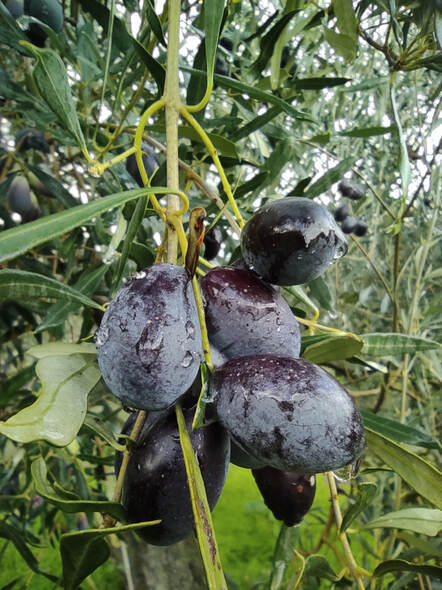

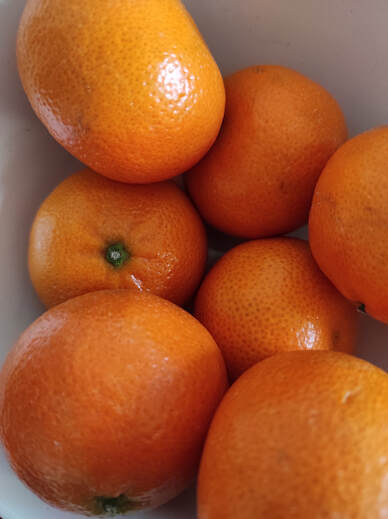

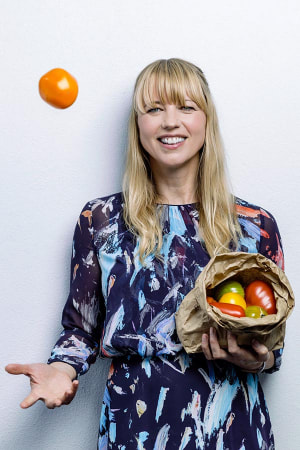
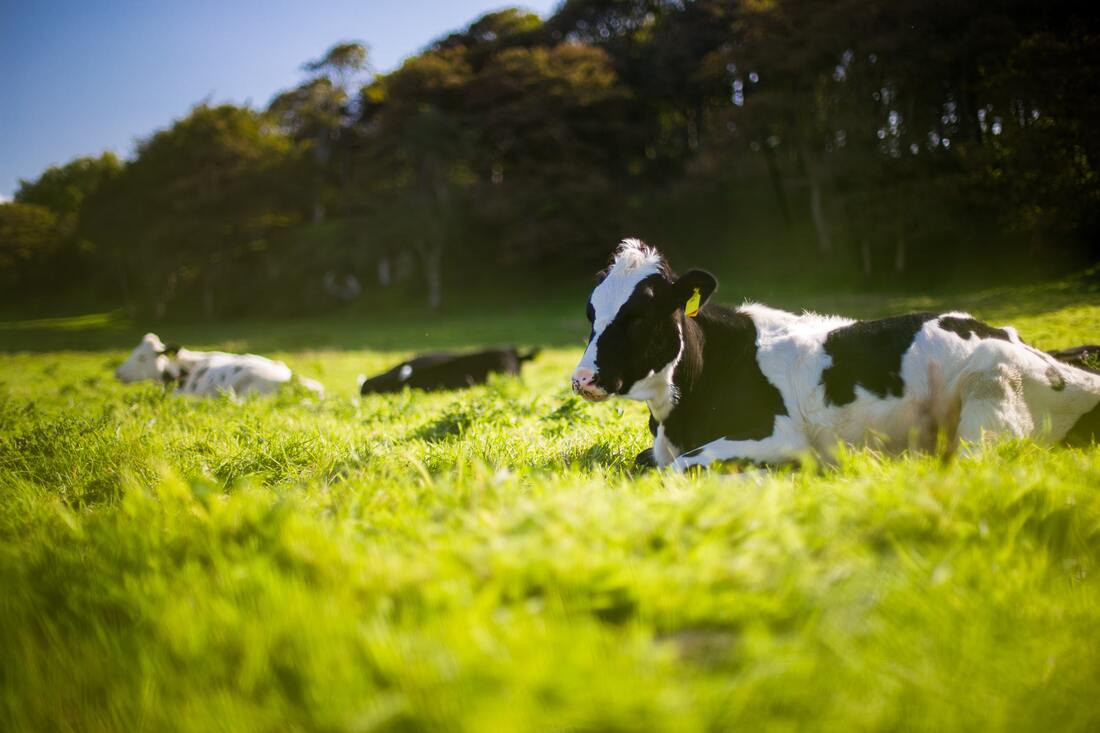

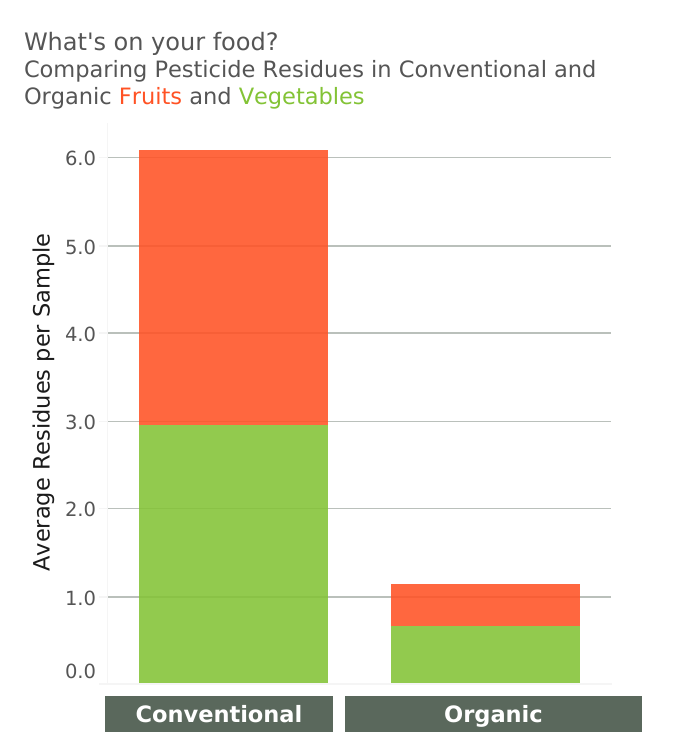
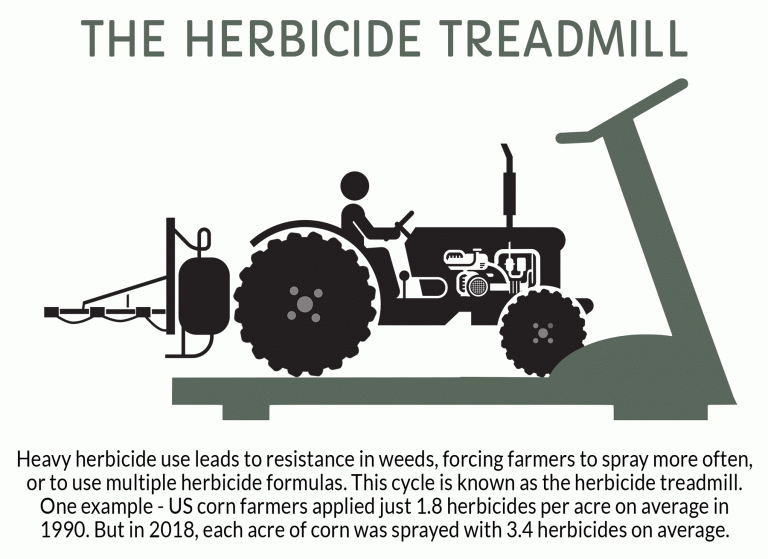
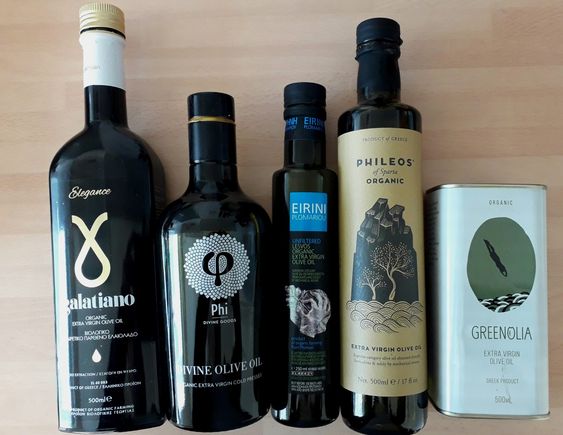

 RSS Feed
RSS Feed
